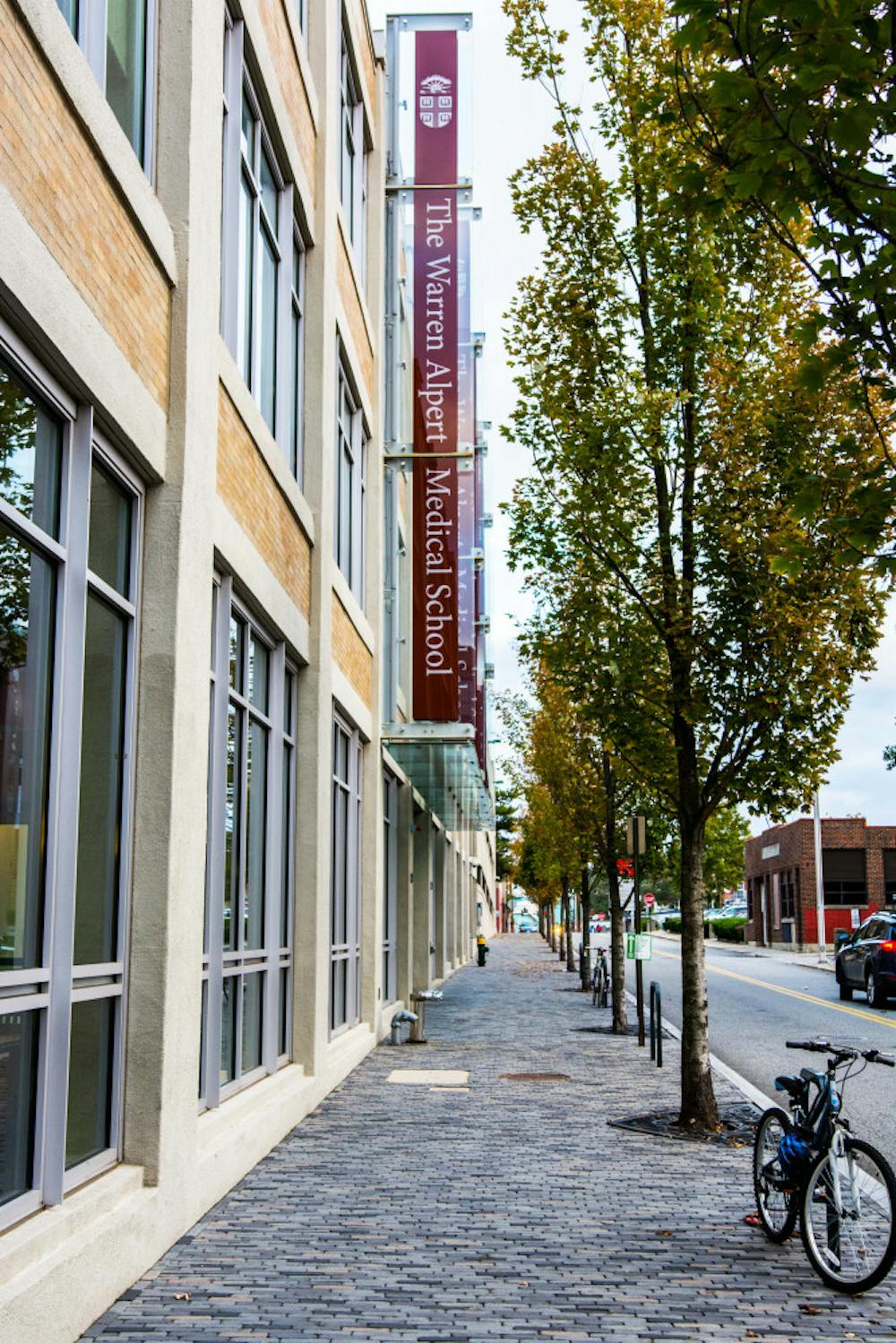University researchers recently led a study comparing the success of students in the eight-year Program in Liberal Medical Education with the performance of students admitted to the Alpert Medical School through the traditional route. The study, published online in the journal Academic Medicine Sept. 25, looked at the test scores and residency placements of students who graduated from the Med School over the last five years.
The study revealed only slight differences in the achievements of PLME students and those who were accepted traditionally. These differences had statistical significance because of the large sample size — 295 PLME students and 215 students admitted conventionally — but “the differences between the two groups were not meaningful in any way,” said Paul George, associate professor of family medicine and medical science and lead author of the study.
The study found the relationship between undergraduate curriculum and success in medical school to be very weak, even within the PLME program. The authors hypothesized that a larger number of undergraduate premedical science courses would be correlated with greater success in medical school and in residency placement, but the data provided little support for this idea. The number of premedical science courses taken at the undergraduate level by PLME students had a minimal effect on their medical school performances, according to the study.
Medical students’ success was measured by competitiveness of residency placement as well as standardized test scores. Only minor differences were noted between the success of PLME and non-PLME students in residency placement, according to the study. Students were placed into primary care and non-primary care residencies at the same rate, George said.
“We had to use rather arbitrary and concocted metrics to be able to compare residency placements,” said Philip Gruppuso, professor of pediatrics and medical science and research professor of molecular biology, cell biology and biochemistry and a coauthor of the study.
The nature of medical work presents a challenge in measuring success, as medical careers have such variation. “It would be nice to look at graduates 20 years out and see what they’re doing,” George said, noting his interest in the relative proportions of students who become researchers, clinical leaders and doctors in health professional shortage areas.
The lack of difference in performance of PLME and non-PLME students calls into question the importance of undergraduate premedical requirements. PLME students have less stringent premedical requirements and are not required to take the Medical College Admission Test.
“There’s really no difference at the end of the day in how students perform in med school, whether they go through PLME or whether they go through a more traditional route,” George said. “I wonder if time would be better spent preparing students to be more holistic in their undergraduate training so they understand people from a biologic standpoint and a non-biologic standpoint.”
Julianne Ip, associate dean of medicine and a coauthor of the study, went through the University’s seven-year medical program before an eighth year was added. “Physicians practice in the real world and need a broad-based education which includes things like history, political science, ethics and public health,” she said. “When you’re interacting with standardized patients it helps you see a more holistic person.”
The movement to revamp standards for premedical education has been growing for many years, Gruppuso said. At Brown, faculty have made efforts to redefine the University’s standards for undergraduate premedical education. “I’ve been trying for many, many, many years to create a more integrated premedical curriculum that really uses biology as a base,” Ip said.
But the process of developing a new curriculum is expensive and time-consuming, Ip said. To be effective, a school cannot make changes on its own — since undergraduates here go on to attend medical schools across the country, those institutions would have to be open to alternative premedical educations as well, she said. The University’s current system successfully sends students to prestigious schools. “Why change what works?” Ip said.
George said the University should not necessarily grow or shrink the PLME program. “The PLMEs inject a really nice mix of different interests and different approaches to medical school and patient care,” said George. “But we also get a really nice cohort of students who come in through the standard program.”
“I wish they did it in more schools across the country,” Ip said.
But combined degree programs like PLME may not be suited to all students. “There are lots of people out there who would benefit enormously from marching through a very rigorous and traditional educational process,” said David Muller, dean for medical education at the Icahn School of Medicine at Mount Sinai. Muller said the methodology of the study was fair, adding that there is not enough reason for the the University to alter its requirements.
More variety is needed in premedical education, Muller said. “The more diverse opportunities there are to enter health care, the better off we are in medical education and the better off students are.”
The FlexMed program at Mount Sinai offers another alternative route to medical school. It allows sophomores from any major to apply to the Icahn School of Medicine after taking only two semester-long premedical courses. If accepted, students are still required to take additional premedical courses, complete a thesis and maintain a 3.5 grade point average, but they are not required to take the MCAT.
“It makes intuitive sense that because people are so different, there should be tailored ways of getting through the premed experience and into medical school,” Muller said.
As an institution that prides itself on the freedom given to its students, Brown is positioned to question and even redefine the traditional courses required for all premedical students, Grupusso said. “Medical schools should get much more creative and inventive around issues relating to premedical education.”





